Nearly two years after the guided-missile destroyer Fitzgerald’s collided with a merchant vessel, drowning seven American sailors, their commanding officer is finally speaking out.
Cmdr. Bryce Benson intended to air his side of things at his court-martial. But last month, outgoing Chief of Naval Operations Adm. John Richardson dropped all criminal charges against Benson and one of his deputies, Lt. Natalie Combs.
The move came after defense attorneys accused Richardson and other Navy leaders of unlawful command influence.
Instead, Navy Secretary Richard Spencer issued a letter of censure against Benson. The administrative sanction was placed in his personnel file.
Benson crafted an 18-page rebuttal to accusations against him, his first public statements regarding what led to the June 17, 2017 tragedy off the coast of Japan.
The story was first reported by U.S. Naval Institute News.
The document offers further insight into the Fitz’s condition before the collision and what the commanding officer thought of his crew, including several who later faced criminal charges for their roles in the catastrophe.
The warship’s former executive officer, Benson helmed the Fitz for 35 days.
“Had that case proceeded to trial, my defense would have been thorough and complete,” Benson wrote in the rebuttal. “Because I have never had an opportunity to make the case that I acted reasonably under the circumstances, I make it here.”
Benson writes that the censure letter he received deserves a response “both for my record and for the Navy’s effort to become a true learning organization.”
Navy officials declined comment because they say Benson’s response has yet to reach Spencer.
They can read it here.
Benson’s attorney, Lt. Cmdr. Justin Henderson, told Navy Times that the response was routed to Spencer’s attorneys late last month.
RELATED
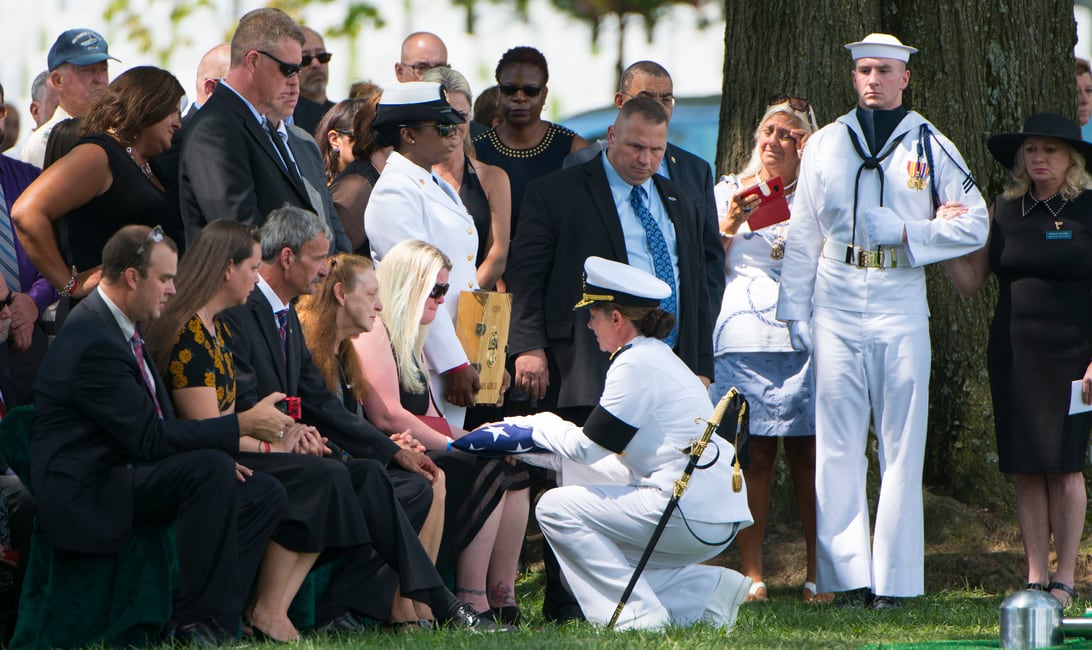
In his response, Benson argues that he made the most prudent decisions he could while leading the crew of the destroyer, even as they grappled with systemic challenges that dogged other warships in the Japan-based 7th Fleet.
A number of investigations — including a scathing internal probe provided to Navy Times — excoriated the service for manning shortages, maintenance delays and a frenzied tempo of operations in the Fitz’s squadron and across the 7th Fleet.
In his rebuttal, Benson acknowledged that as a commanding officer he should be “rightly held to account for every action” on board his vessel, “from the performance of my watchstanders to my crew’s heroic efforts to save a sinking ship while I was incapacitated by injury.”
But he strongly disputed that his leadership and judgment proved ineffective or poor and indicated that investigators concocted allegations “unsupported by evidence” through “factual errors” to blame him for the 2017 collision with the merchant vessel ACX Crystal.
Spencer’s written reprimand criticizes Benson’s decision to retire to his quarters about an hour before midnight that night.
He challenges a portion of Spencer’s letter that characterized him as “disengaged and removed” during the ship’s nighttime transit, opting to retire to his quarters instead of overseeing the trip.
“No ship commander can maintain direct tactical control of all evolutions at all times,” Benson wrote, adding that he was on the bridge more than 12 hours the day before the collision, “completely engaged in consecutive high-risk evolutions requiring complex coordination to safely and efficiently navigate in restricted waters, launch and recover helicopters, and operate and recover small boats.”
Benson assessed his watch team, the surface navigation picture and other factors and decided his crew could lead the destroyer into open waters where they would conduct long-delayed mobility engineering certification exercises en route to operations in the South China Sea.
“I departed the bridge after 2300 confident that my team would adhere to basic principles of safe navigation, including my directive to call me,” he wrote. “Having properly applied risk-management analysis, I was neither ‘disengaged’ nor ‘removed.’”
Benson’s decision to seek rest left a watch team in place that was unprepared for the transit across a bustling shipping lane to the South China Sea, Richardson’s censure letter states.
But Benson points to the Navy’s own internal investigation into the disaster, which found all the watchstanders on the bridge and combat information center were qualified for the duty.
“These watch team members had demonstrated their competence — including confidence and technical understanding — in front of properly-constructed qualification boards, to my predecessors, in official external navigation assessments, and under my command,” he wrote.
RELATED
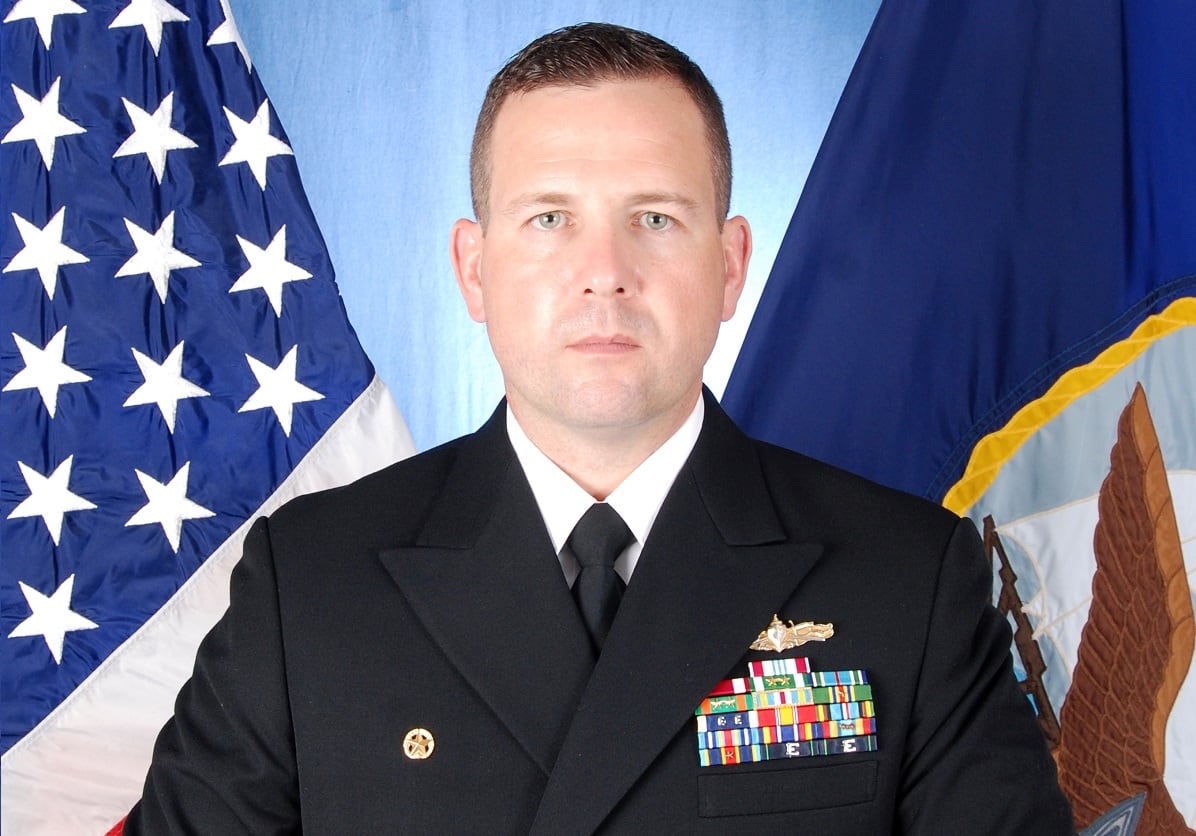
Benson’s rebuttal praises Lt. j.g. Sarah Coppock — the officer of the deck at the time of the collision who pleaded guilty last year to a dereliction of duty charge — and noted observing her in advanced leadership positions before the collision.
“Her performance was stellar,” he added.
Benson was only underway for eight days of his command but wrote that Coppock had “performed superbly as Anti-Submarine Warfare Officer in a real-world operation lasting two days."
Benson’s rebuttal also lauds Lt. Natalie Combs, who was the tactical action officer at the time of the collision, helming the ship’s combat information center.
Combs also faced court-martial trial on similar charged until prosecutors dropped the case last month.
“Her record was flawless, having achieved advanced qualifications during her division officer tours while assigned to USS MCCAMPBELL,” Benson wrote. “Her former commanding officer advised me that she was the most professional and competent officer who served under his command.”
Benson called Combs, Coppock and other watchstanders that night “among the most-experienced and capable watch teams anyone could find in (Destroyer Squadron 15) in 2017.”
As for sea traffic in the maritime thoroughfare off the coast of Japan, Benson termed it “manageable.” That contrasted with the report overseen by Rear Adm. Brian Fort that was submitted 41 days after the collision that concluded it was so bustling that it deserved an experienced hand on the bridge to guide the young watchstanders.
The Fitz followed a route routinely sailed by other 7th Fleet ships, Benson wrote, a path for which higher ups had offered no alternative.
RELATED
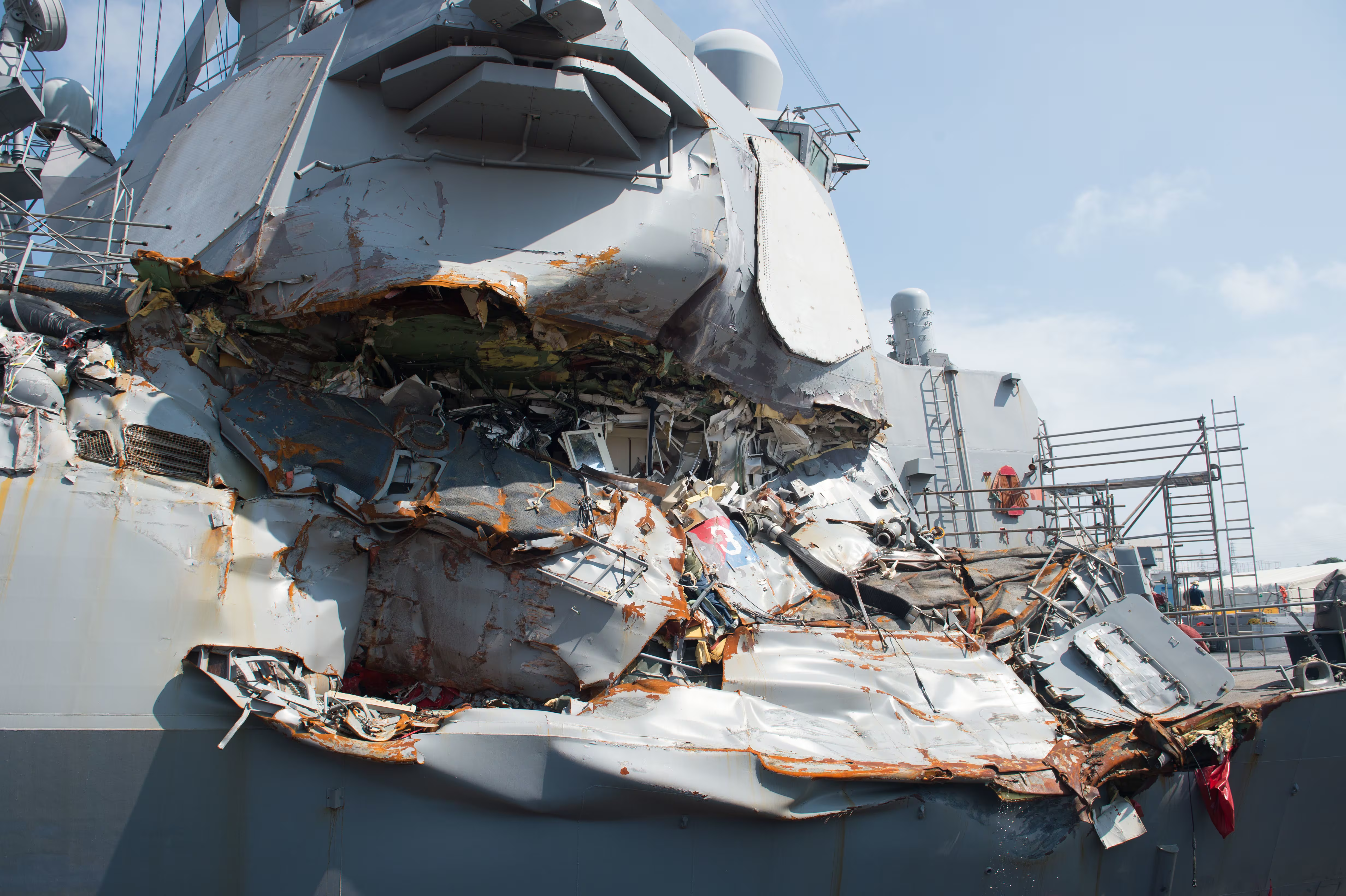
The Crystal made an 18-degree port turn toward the Fitz 10 minutes before the collision, and Benson wrote that the disaster was due to a “basic crossing situation.”
“FITZGERALD was required to give-way and the other vessels were to maintain their course and speed,” he wrote. “However challenging one may consider this crossing situation, my watchstanders had the tools to avoid a collision.”
In his rebuttal, Benson explained that the late night transit was designed to buy time for the warship to safely conduct engineering exercises in the open sea and catch up on certifications.
A fire broke out on board the destroyer during a drill 10 days before the collision with the ACX Crystal, cutting power to the warship. Benson’s rebuttal indicates that he was trying to get his vessel four hours ahead of their “Position of Intended Movement” redo the drills.
“I did not assess that additional experience or supervision would mitigate the foreseeable navigational risks,” he wrote. “The supervisory watchstanders had demonstrated the ability to navigate in open-ocean and coastal waters as well as the ability to comply with my standing orders under these conditions.”
He also challenged accusations that he failed to approve a watch bill that would’ve accounted for the fatigue of his watch team.
“Approving a watchbill with qualified and experienced personnel was my first priority,” he wrote. “Fatigue management was a close second.”
The pace of operations on June 16 was “arduous,” Benson conceded. He had the crew working at 6 a.m. to allow "first-line leaders the opportunity to look their sailors in the eyes to determine their readiness level.”
Benson expresses pride in how his crew performed that day, getting underway right on time, dropping anchors within feet of their target and starting helo operations “exactly 37 minutes prior to sunset.”
“16 June was the best day that I had at sea during my then-eighteen years of service,” he recalled. “I had no basis — fatigue or otherwise — to request an amended schedule and postpone our training certifications or delay or forego our National tasking in the South China Sea.”
RELATED
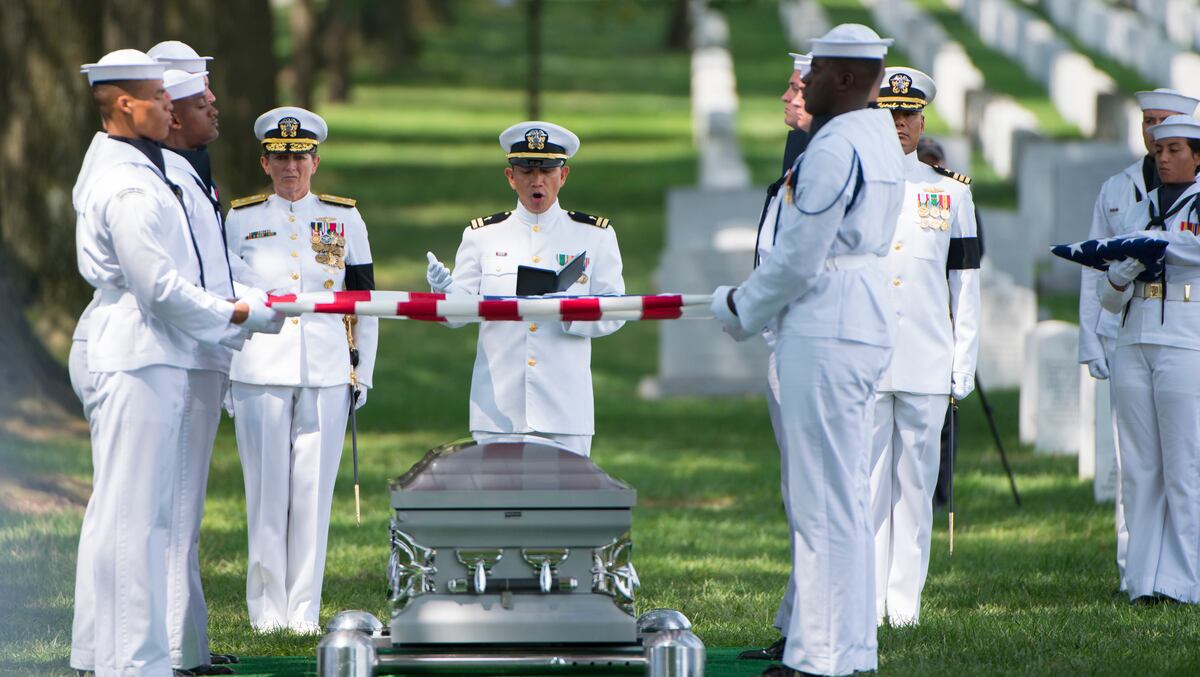
SECNAV’s censure letter ripped Benson for failing to revise standing orders or procedures to account for broken equipment, most notably a radar control with a taped-over button.
Benson counters that it was within his discretion to calculate how such an issue would affect his ship’s operations.
The Fitz had more than 2,100 “material discrepancies” in June 2017, he wrote.
“It is neither reasonable nor useful to issue 2,100 temporary standing orders,” Benson argued.
The broken button on the SPS-67 Radar remote had been like that since late 2016, Benson wrote, and he never received reports from his crew that it affected their ability to get the job done.
That radar control button had been scheduled for repair in June during a maintenance availability, but the session was deferred so that the Fitz could conduct operations at sea, he wrote.
The crew cleared at least 25 ship casualty reports, or CASREPs, in the month leading up to the collision, according to Benson.
But the Fitz took at least 16 unresolved CASREPs with them when they got underway on June 16.
RELATED
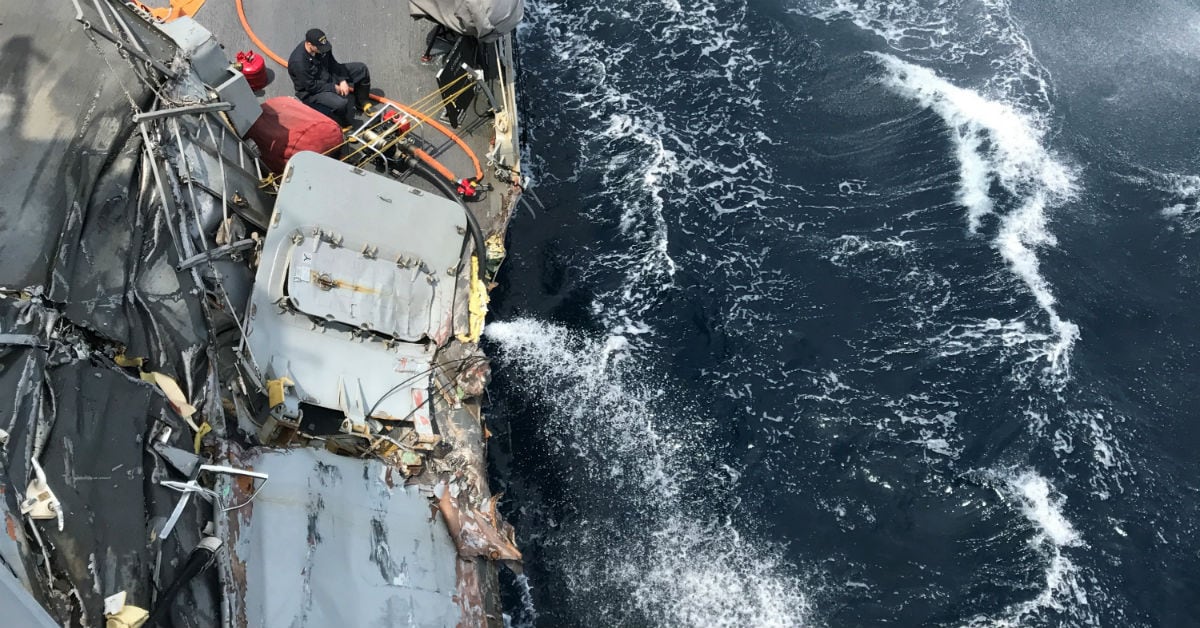
In his brief 35 days in command, Benson insisted that he took every opportunity to train his sailors.
“All of our training and certification exercises for the foreseeable future had been postponed for operational tasks,” he wrote in his rebuttal. “My crew’s performance was brilliant despite these training and certification conditions … I never abrogated my responsibility to prepare my ship and crew for our mission tasking.”
“And while I accept my failure to foresee and mitigate our navigational risks, I submit that FITZGERALD symbolizes why the Navy does not assign risk management to one location."
Benson argues in his response that if he’d had more time, his corrective plan would’ve addressed the shortcomings that led to the collision.
Despite manning shortages, gapped billets and high turnover, the Fitz still accomplished several big missions in early 2017, Benson noted.
“She successfully completed a bilateral exercise with the Japanese Maritime Self Defense Force, South China Sea patrols, ballistic missile defense missions, dual carrier strike group formation exercises off of North Korea, and anti-submarine warfare missions,” he wrote.
Three days after taking command, Benson cancelled or denied leave for 17 sailors because the manning situation was “dire.” He said sailors accepted his decision “not because of our complacency or informality, but because of our commitment to the mission.”
Benson argues that he and his crew mitigated unit-level risks but were powerless before “systemic matters” bedeviling 7th Fleet, including manning shortages.
“Few if any unit-level commanders are in a position to accurately foresee, evaluate, and mitigate against the aggregated institutional risks imposed by a force generation model that keeps forward-deployed vessels undermanned, forecloses training for the sake of operations, and deprives ships of needed maintenance,” Benson wrote.
Such conditions increase and compound the risk that commanders and crews face, he added.
“At the unit level, accurately evaluating accumulated structural risks, and developing and implementing appropriately-calibrated measures to protect against organizational drift in those conditions, is almost impossible,” Benson concluded.
Geoff is the managing editor of Military Times, but he still loves writing stories. He covered Iraq and Afghanistan extensively and was a reporter at the Chicago Tribune. He welcomes any and all kinds of tips at geoffz@militarytimes.com.





